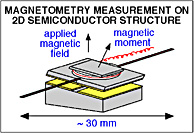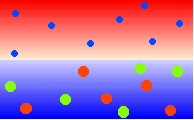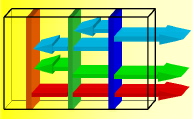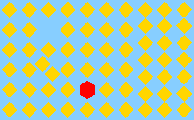
| Physics and Astronomy |
|
| Physics Home | Study here | Our Teaching | Our Research | Our Centres | News | Work here | EMPS |
|
Physics Research
Research groups
See Also
|
||||||||||||||
Back to top
Quantum Interacting Systems Research
Low-Dimensional PhysicsReduction in dimensionality of a physical system has profound consequences on its properties, and can result in entirely new and unexpected phenomena. The group is involved in studies of new phases of matter in 2D semiconductor structures, optical studies of 1- and 0-dimensional systems, conduction processes and quantum transport in mesoscopic structures, quantum evaporation from 2D layers of 3He on 4He and thermodynamic measurements of low-dimensional systems. These experimental investigations are complemented by theoretical studies of many-body effects in semiconductors and the properties of semiconductor interfaces and surfaces. Recent highlights include observation of a new phase transitions 2D hole systems, and in electron double layers, determination of the energy gap associated with the fractional quantum Hall effect via a magnetisation measurement and a theoretical calculation of electron transport in quantum dots and of adsorption of molecules on semiconductor surfaces. More about:
New states of matter in semiconductors Quantum FluidsThe group is interested in the elementary excitations of liquid 4He because these are central to the understanding of the only accessible superfluid (Bose-Einstein) liquid. Techniques developed at Exeter are used to create beams of ballistic excitations - phonons and rotons - that are used in a variety of experiments. If a beam is directed at the free surface of the liquid then quantum evaporation occurs: a phonon or roton is annihilated and a free atom is ejected. This facilitates detection of ballistic rotons which were observed for the first time at Exeter. We have just detected a negative group velocity roton; it was very difficult to find as it has a very low probability for quantum evaporation. Now we are about to fire atoms through a liquid helium film. The probability of transmission will be compared to a theoretical prediction. More about:
Cosmic strings (topological defects in helium-II) Theory of Condensed MatterThe theoretical work within the group is concerned with the quantum properties of condensed matter and uses a range of techniques from formal many-body theory to large computational studies. In collaboration with researchers in the UK and abroad the group is involved with investigation of the structural, electronic, vibrational, optical and plasmon properties of semiconductors, with special reference to defects and low-dimensional systems such as surfaces, interfaces, superlattices and quantum wells, wires and dots. The group has the second-most-powerful supercomputer in any UK university (at the time of writing), and also makes extensive use of national computing facilities. Theoretical work within the Group covers a wide range of topics in condensed matter physics, using both formal and computational techniques, and has an international reputation. We have major efforts in the areas of many body theory, the electronic properties of surfaces, heterojunction systems, low-dimensional semiconducting structures, and the electronic and mechanical properties of non-metallic solids. Close co-operation between the experimental and theoretical group members is maintained by regular informal seminar meetings and joint research programs. The development of computational power and sophisticated analytical formulations has increased the physicists' ability to treat real systems and relate theory to experimental developments. At Exeter we have developed a whole range of techniques, which are amongst the most powerful currently available anywhere, for the investigation of complex solid-state problems. More about:
First-principles investigations of clusters of atoms General InformationPersonnel
Group FacilitiesExperimental facilities include helium dilution refrigerators capable of sustaining temperatures within 20 millikelvin of absolute zero, superconducting magnets with fields up to 19 tesla, state-of-the-art capabilities for measuring the electrical conductivity, photoluminescence and magnetisation of low-dimensional semiconductor systems, and custom-made experimental cells for studies of liquid helium. The group also has a dedicated clean room for sample fabrication. Our laboratories are supported by the School's well-staffed and well-equiped Mechanical and Electronics Workshops which are used to undertake tasks ranging from the construction of complete helium dilution refrigerators to microprocessor-controlled monitoring apparatus. The School also runs its own helium and nitrogen liquefiers. The theoretical section of the group has its own dedicated cluster of Unix workstations and is at the centre of a consortium at the University of Exeter which has recently acquired a large supercomputer (at the time of writing, the second most powerful computer in any UK university). The group also has access to national supercomputers, Cray YMP8 at the Rutherford Laboratory and Fujitsu at University of Manchester Computer Centre, as well as a set of SGI machines provided by the University's Computer Unit. See Also
|




